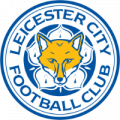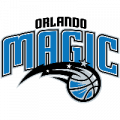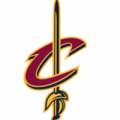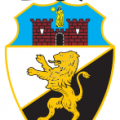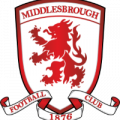It might be hard to believe for those who did not watch Liverpool’s 5-0 destruction of FC Porto in the Champions League, but the beginning of the match was tight and tense.
Yet the Reds held their own defensively and once the first two goals went in the Portuguese side collapsed, and Liverpool ran riot in the second half. As poor as Porto were, the Reds went through the gears and can look back on Wednesday night as an immensely impressive display – one fitting to mark Liverpool’s return to the knockout stages of Europe’s premier club competition.
On the previous occasion that Liverpool were in the last 16 of the Champions League, the Reds famously defeated Real Madrid 5-0 on aggregate. Porto are not Real, but the Reds have already reached the same scoreline with the return leg at Anfield to come.
Jürgen Klopp can rotate his side for the second leg, keeping his best players fresh for the following fixture – an encounter with Manchester United at Old Trafford – while allowing players currently on the sidelines to experience Champions League football.
The likes of Danny Ings, Alex Oxlade-Chamberlain, Adam Lallana and Joe Gomez would all hugely benefit from ninety minutes in Europe, with Liverpool’s experience at this level light for the current squad.
Spreading as much experience around when an opportunity such as the second leg arises, with Liverpool in such a dominant position, is worthwhile rotation, even as Klopp looks to nail down his strongest side ahead of the run-in.
To not rotate in the second leg would suggest that Klopp does not trust the other members of his squad to see out a 5-0 aggregate lead at home, against a Porto side who do not travel well historically against English sides.
Liverpool still have a top two finish and the Champions League to chase, but they need to pace themselves when they can, and the second leg, thanks to the efforts in the first, presents an ideal opportunity as Klopp’s rotation scales down in the final third of the season.
Electric three
Liverpool’s front three of Roberto Firmino, Mohamed Salah and Sadio Mané were especially electric against Porto. Firmino and Salah continued their remarkable form this season while Mané also rediscovered his best level with a first hat-trick for the Reds.
Hopefully the Senegalese star can use his performance as an inspiration to kick on, as his consistency has fluctuated during games, let alone from game to game.
Playing on the left probably does not help, given Mané’s success on the right last season, which has been overshadowed by Salah’s incredible exploits on the right during this campaign, but Mané’s instinctive ability can be frightening when fully confident.
Mané has now set himself up perfectly to finish the season in style. Even when not at his best he has almost equalled his statistics from last season (twelve goals this season, thirteen last season), while Firmino has twenty-one goals this season and Salah an incredible thirty.
We are not even into March yet.
The last time Liverpool possessed such a flamboyant and devastating attack was in the 2013/14 season, when Brendan Rodgers assembled the quartet of Luis Suárez, Daniel Sturridge, Raheem Sterling and Philippe Coutinho to lead Liverpool’s Premier League title charge. Coutinho also featured in the current Liverpool side, prior to his departure in January to Barcelona.
Comparisons to be made?
Rodgers’ front four were protected by the energy of Jordan Henderson and leadership of Steven Gerrard, but less so by the defence, who suffered under Rodgers’ ultra-attacking tactics but also their own inconsistencies.
Simon Mignolet was only in the first of his near five underwhelming years at Liverpool; Martin Skrtel and Mamadou Sakho were the preferred partnership at the back, with Daniel Agger often ignored or injured and Kolo Touré the experienced reserve; Jon Flanagan impressed greatly at left-back but was helped by the hopeless form of loanee Aly Cissokho, while Glen Johnson (who was always better going forward than defending) was beginning to decline.
In addition, Liverpool’s overall squad in 2013/14 was extremely thin, with the options outside of the starting eleven consisting of Luis Alberto, Iago Aspas, Victor Moses and Joe Allen.
Liverpool will not come close to challenging for the title in 2017/18, but the team and squad are stronger – as are the elite teams of the Premier League who Klopp’s Reds are now competing against.
Loris Karius edges out Mignolet, although the former still has plenty to prove before being assured of a long-term future at Anfield.
Virgil van Dijk’s addition puts Liverpool’s current back four beyond Rodgers’ defence, and the depth at full-back is far more encouraging with Andrew Robertson, Alberto Moreno, Trent Alexander-Arnold, Joe Gomez and Nathaniel Clyne.
Klopp’s midfield, whilst consistent and balanced against Porto, lacks creativity. Coutinho provided that spark under Rodgers, while Henderson is a completely different player now compared to 2013/14.
The current Liverpool captain’s energetic peak was vital for Rodgers’ side to function and he was a better option four years ago compared to his current self. Whilst Henderson is a steady and reliable deep-lying midfielder under Klopp, he has been blighted by injuries in recent years and lacks some of his past physical attributes.
Meanwhile, Gerrard’s leadership was irreplaceable, despite the unfortunate circumstances against Chelsea.
Finally, Suárez, Sturridge and Sterling were world-class in 2013/14, but so are Liverpool’s current front three. There is no doubting the form of Salah and Firmino, and Mané offers more than Sterling did in 2014. Furthermore, the fluidity and selflessness of Klopp’s attacking trio means they offer a greater combined threat than the fearsome attack that nearly carried Rodgers’ Liverpool to the Premier League title.
Klopp will be aiming to go one step further than Rodgers next season, and the German has the talent, both in himself and his squad, to take Liverpool back to the top.



















